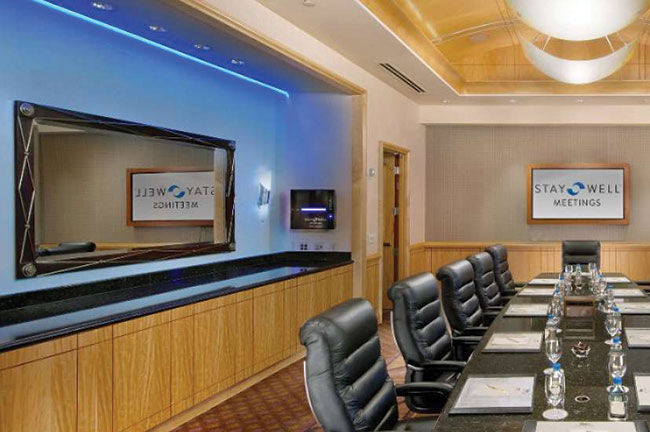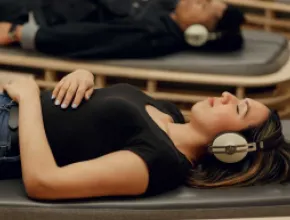MGM Resorts International began its journey of developing Stay Well Guest Rooms and our Stay Well Meetings program with our friends at Delos with an education and understanding of the importance of lighting (specifically the right color of light to drive meetings results).
We learned that lighting has a tremendous impact on mental acuity, alertness, energy, mood and engagement, so circadian rhythm’s effect on our mind and bodies became the central point of our meetings journey.
[Related Content: Using Science to Create a Better Meetings Experience]
With the design of our Stay Well Meeting rooms, we were able to utilize circadian lighting systems that simulate natural sunlight patterns indoors, which helps with alertness during the day but will also contribute to a better sleep pattern—specifically on the road. Just being away from home already plays havoc with our sleep routines and physical well-being.
Lighting Directly Influences Health and Mental Focus
Since we spend almost 90 percent of our time indoors—specifically at meetings—we are disconnected from sunlight. The saturation of unnatural light can disrupt our circadian rhythm and potentially have a profound effect on health, well-being and performance.
When explaining this occurrence, we often point out the natural flow of a day outdoors. Each sunny, beautiful day has a blue sky while each sunset has an orange/yellow tone.
Carry this into our everyday lives.
Yellow, dim lighting traditionally has existed in most meeting facilities. We have the ability today with LED lighting to provide the right lighting that is specific to spaces and objectives.
[Related Content: How to Use Essential Oils to Transform Events]
An understanding of our body clocks should also assist the meeting professional in agenda design, as our alertness hits a peak at 10 a.m. each morning, according to MGM Resorts International's research with Delos. This is something to consider when scheduling important discussions, brainstorming or activities that require intense mental focus.
The science of lighting includes the importance of color, specifically in creating appropriate environments. As an industry, we have always focused on lighting from an aesthetics standpoint in creating a feel in a room. As we dig deeper into collaborative spaces, it is important to remember the impact of color on mood, energy and creativity.

Stay Well Meeting Room: Subtle Blue LED Lighting Can Help Readjust Circadian Rhythm When Traveling
How Lighting Color Choice Affects Meetings Performance
Following are some specific examples of how the color of lighting can affect the performance of attendees at meetings:
- Red: Red is a color that stimulates the adrenal gland and has shown to improve focus and performance.
- Green: Green, on the other hand, appears to promote relaxation and overall improved health.
- Orange: Orange stimulates critical thinking and memory but is not good for the diet as it also has been shown to increase appetite.
The learnings demonstrated here should remind us to be thoughtful on what we are trying to achieve at our meetings and events, specifically with small intimate groups who are brought together to engage and collaborate. Utilization of the right lighting and color can help improve the overall results of those interactions and even influence important business decisions.
Stay Tuned for More From Michael Dominguez
This is the second installment of a yearlong Science of Meetings series that will take a deeper dive into areas intended to help us evolve the meetings experience.
View the first installment. View the third installment.
[Read This Next: Sensory Inclusive Event Venues – Why They Matter]







